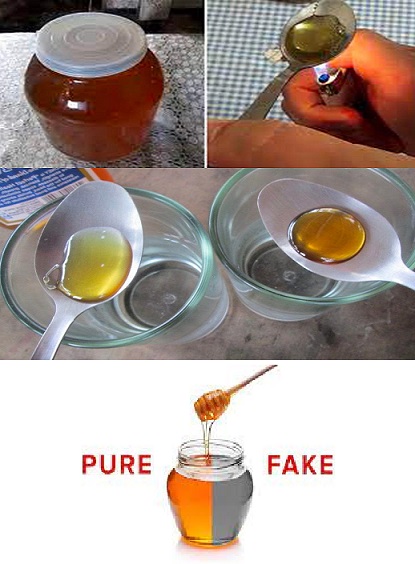Place a drop of honey on your thumb.
Check if it spreads or drips quickly.
If it spreads rapidly, it’s likely adulterated.
Pure honey should stay intact on your thumb.
Water Test:
Fill a glass with water.
Add a spoonful of honey to the glass.
Adulterated or artificial honey dissolves quickly.
Pure honey settles at the bottom before stirring.
Flame Test:
Did you know pure honey is flammable? This test checks the absolute purity of honey.
Strike a match and touch it to the honey’s surface.
If the honey is fake, the match will light up and then quickly extinguish. Adulterated honey may contain moisture, one of the common impurities.
Vinegar Test:
Mix honey with water and a few drops of vinegar.
If the solution becomes foamy, it indicates adulteration.
Paper Towel Test:
Pure honey, when contaminated with water, can be absorbed or leave damp residues on absorbent materials like blotting paper. Therefore, genuine honey should leave no wet traces on dry paper.
Ant Test:
Ants are attracted to adulterated honey due to its sugar content but not to pure honey. However, this test isn’t widely supported by evidence, and there’s no known reason why ants would prefer processed sugar over real honey.
Distinguishing Between 100% Pure Honey and Adulterated Honey:
To enjoy the benefits of honey, purity is paramount. Due to high demand, some companies exploit this by selling adulterated honey, which may contain additives like glucose, dextrose, molasses, sugar syrup, corn syrup, starch, or other similar products.
Characteristics Comparison:
Continue Reading in next page

